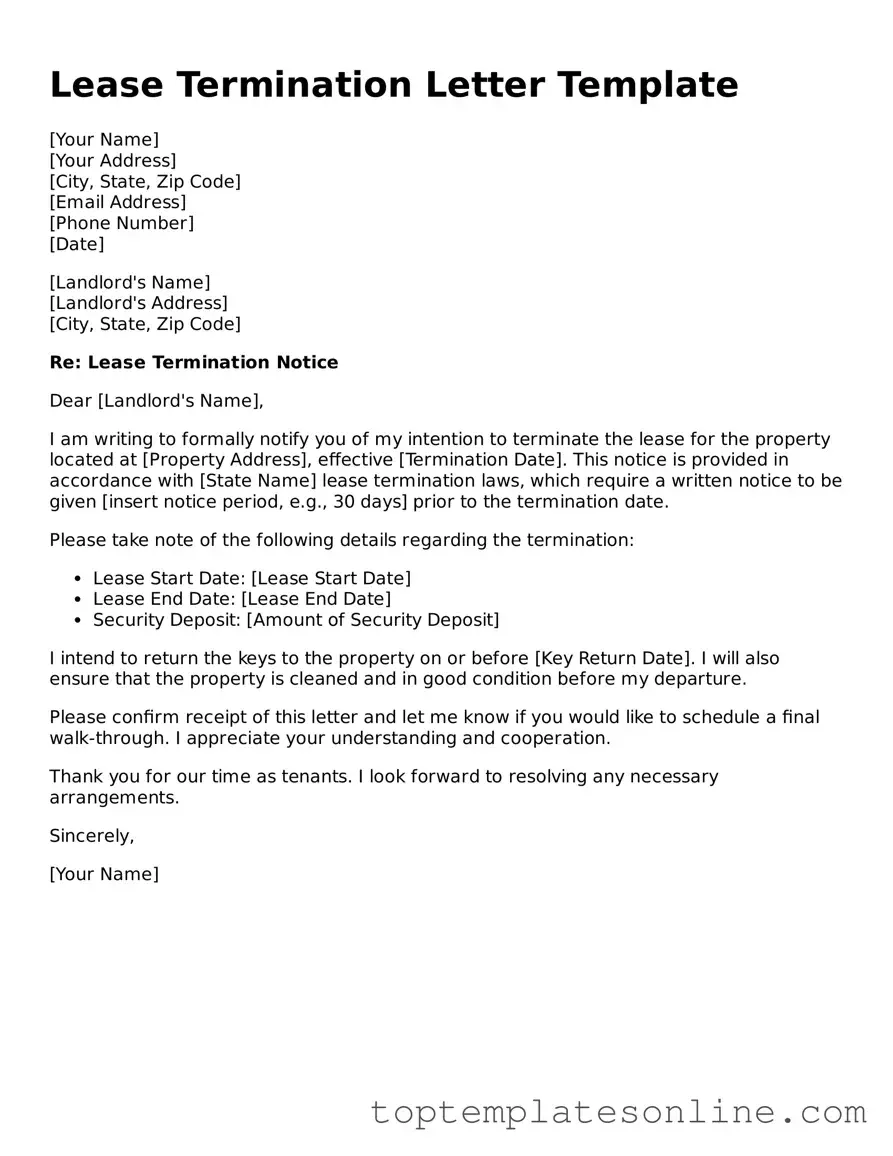When it comes to ending a rental agreement, a Lease Termination Letter is an essential tool for both tenants and landlords. This formal document serves as a written notice to terminate a lease, ensuring that all parties are aware of the intent to vacate the premises. It typically includes important details such as the effective date of termination, the reason for leaving, and any obligations that need to be fulfilled prior to the move-out date. By providing clear communication, this letter helps to prevent misunderstandings and fosters a smoother transition for everyone involved. Whether you are a tenant who needs to move for personal reasons or a landlord who is preparing for a new tenant, understanding the components of a Lease Termination Letter can make the process more manageable and respectful. This form not only protects your rights but also establishes a record of your intentions, which can be crucial should any disputes arise later on. In essence, it is a vital step in maintaining professionalism and courtesy in the often complicated world of rental agreements.
